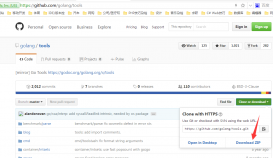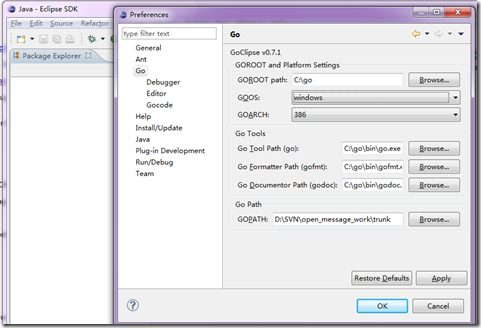学完了net/http和fasthttp两个HTTP协议接口的客户端实现,接下来就要开始Server的开发,不学不知道一学吓一跳,居然这两个库还支持Server的开发,太方便了。相比于Java的HTTPServer开发基本上都是使用Spring或者Springboot框架,总是要配置各种配置类,各种handle对象。Golang的Server开发显得非常简单,就是因为特别简单,或者说没有形成特别统一的规范或者框架,我发现了很多实现方式,HTTP协议基于还是net/http和fasthttp,但是handle语法就多种多样了。
先复习一下:Golang语言HTTP客户端实践、Golang fasthttp实践。 在Golang语言方面,实现某个功能的库可能会比较多,有机会还是要多跟同行交流,指不定就发现了更好用的库。下面我分享我学到的六种Server开发的实现Demo。
第一种
基于net/http实现,这是一种比较基础的,对于接口和handle映射关系处理并不优雅,不推荐使用。
|
1
2
3
4
5
6
7
8
9
10
11
12
13
14
15
|
func TestHttpSer(t *testing.T) { server := http.Server{ Addr: ":8001", Handler: http.HandlerFunc(func(w http.ResponseWriter, r *http.Request) { if strings.Index(r.URL.String(), "test") > 0 { fmt.Fprintf(w, "这是net/http创建的server第一种方式") return } fmt.Fprintf(w, task.FunTester) return }), } server.ListenAndServe() log.Println("开始创建HTTP服务")} |
第二种
第二种也是基于net/http,这种编写语法可以很好地解决第一种的问题,handle和path有了类似配置的语法,可读性提高了很多。
|
1
2
3
4
5
6
7
8
9
10
11
12
13
14
15
|
type indexHandler struct { content string}func (ih *indexHandler) ServeHTTP(w http.ResponseWriter, r *http.Request) { fmt.Fprintf(w, ih.content)}func TestHttpSer2(t *testing.T) { http.Handle("/test", &indexHandler{content: "这是net/http第二种创建服务语法"}) http.Handle("/", &indexHandler{content: task.FunTester}) http.ListenAndServe(":8001", nil)} |
第三种
第三个基于net/http和github.com/labstack/echo,后者主要提供了Echo对象用来处理各类配置包括接口和handle映射,功能很丰富,可读性最佳。
|
1
2
3
4
5
6
7
8
9
10
11
12
13
14
15
|
func TestHttpSer3(t *testing.T) { app := echo.New() app.Use(middleware.CORSWithConfig(middleware.CORSConfig{ AllowOrigins: []string{"*"}, AllowMethods: []string{echo.GET, echo.DELETE, echo.POST, echo.OPTIONS, echo.PUT, echo.HEAD}, AllowHeaders: []string{echo.HeaderContentType, echo.HeaderAuthorization}, })) app.Group("/test") { projectGroup := app.Group("/test") projectGroup.GET("/", PropertyAddHandler) } app.Server.Addr = ":8001" gracehttp.Serve(app.Server)} |
第四种
第四种依然基于net/http实现,引入了github.com/gin-gonic/gin的路由,看起来接口和handle映射关系比较明晰了。
|
1
2
3
4
5
6
7
8
9
10
11
12
13
14
15
16
17
18
19
20
21
22
|
func TestHttpServer4(t *testing.T) { router := gin.New() api := router.Group("/okreplay/api") { api.POST("/submit", gin.HandlerFunc(func(context *gin.Context) { context.ShouldBindJSON(map[string]interface{}{ "code": 0, "msg": "这是创建HTTPServer第四种方式", }) context.Status(200) })) } s := &http.Server{ Addr: ":8001", Handler: router, ReadTimeout: 1000 * time.Second, WriteTimeout: 1000 * time.Second, MaxHeaderBytes: 1 << 20, } s.ListenAndServe()} |
第五种
第五种基于fasthttp开发,使用都是fasthttp提供的API,可读性尚可,handle配置倒是更像Java了。
|
1
2
3
4
5
6
7
8
9
10
11
12
13
14
15
16
17
18
19
|
func TestFastSer(t *testing.T) { address := ":8001" handler := func(ctx *fasthttp.RequestCtx) { path := string(ctx.Path()) switch path { case "/test": ctx.SetBody([]byte("这是fasthttp创建服务的第一种语法")) default: ctx.SetBody([]byte(task.FunTester)) } } s := &fasthttp.Server{ Handler: handler, Name: "FunTester server", } if err := s.ListenAndServe(address); err != nil { log.Fatal("error in ListenAndServe", err.Error()) }} |
第六种
第六种依然基于fasthttp,用到了github.com/buaazp/fasthttprouter,有点奇怪两个居然不在一个GitHub仓库里。使用语法跟第三种方式有点类似,比较有条理,有利于阅读。
|
1
2
3
4
5
6
7
8
9
10
11
12
13
|
func TestFastSer2(t *testing.T) { address := ":8001" router := fasthttprouter.New() router.GET("/test", func(ctx *fasthttp.RequestCtx) { ctx.Response.SetBody([]byte("这是fasthttp创建server的第二种语法")) }) router.GET("/", func(ctx *fasthttp.RequestCtx) { ctx.Response.SetBody([]byte(task.FunTester)) }) fasthttp.ListenAndServe(address, router.Handler)} |
到此这篇关于Go语言HTTPServer开发的六种实现小结的文章就介绍到这了,更多相关Go HTTPServer 内容请搜索服务器之家以前的文章或继续浏览下面的相关文章希望大家以后多多支持服务器之家!
原文链接:https://blog.51cto.com/FunTester/4515606












